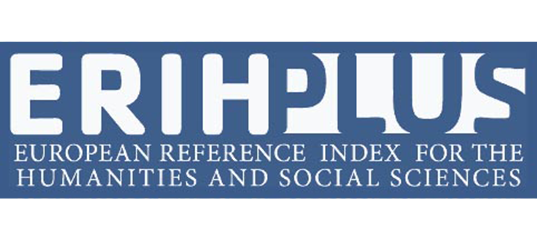Predicción de la Efectividad de las Pruebas Rápidas Realizadas a Pacientes con COVID-19 mediante Regresión Lineal y Random Forest
DOI:
https://doi.org/10.46480/esj.5.2.108Palabras clave:
COVID-19, Machine Learning, Regresión Lineal, Random Forest, PredicciónResumen
En el transcurso del tiempo el mundo ha necesitado del conocimiento y la perseverancia de los seres humanos para poder solucionar cualquier problemática que se le presente. Como, por ejemplo, ¿en qué proporción está el aumento de infectados por COVID-19 en todo el planeta? Con la ayuda de enfoques no clínicos y tecnologías modernas como la minería de datos, inteligencia aumentada y técnicas de inteligencia artificial, se ha logrado agilizar la enorme carga de trabajo en los sistemas de salud y al mismo tiempo brindar los mejores medios posibles para el diagnóstico y pronóstico de pacientes con covid-19 de manera efectiva. En este estudio, se implementó un modelo matemático para la predicción de la efectividad de las pruebas rápidas a las que se someten las personas posiblemente infectadas y definir cuál es el comportamiento epidemiológico causado por SARS-CoV2 (COVID-19). Para determinar el tipo de modelo a utilizar se aplicaron dos algoritmos, el de Regresión Lineal y el de Bosque Aleatorio o Random Forest, a un conjunto de datos utilizando el lenguaje de programación Python. Posteriormente se realizarán las pruebas necesarias para verificar la efectividad de cada una de ellos. Una vez definido el modelo y después de haber realizado el debido entrenamiento de este, se realizará la predicción de un número mínimo y máximo de las pruebas rápidas utilizadas en los pacientes que se encuentran infectados con COVID-19, identificando cuál de las pruebas rápidas es la más utilizada y cuál es la más efectiva.
Descargas
Referencias
Wu, Y. C., Chen, C. S., & Chan, Y. J. (2020). The outbreak of COVID-19: An overview. In Journal of the Chinese Medical Association (Vol. 83, Issue 3). https://doi.org/10.1097/JCMA.0000000000000270
Guiñez-Coelho, M. (2020). Impacto del COVID-19 (SARS-CoV-2) a Nivel Mundial, Implicancias y Medidas Preventivas en la Práctica Dental y sus Consecuencias Psicológicas en los Pacientes. International Journal of Odontostomatology, 14(3). https://doi.org/10.4067/s0718-381x2020000300271
Cobb, J. S., & Seale, M. A. (2020). Examining the effect of social distancing on the compound growth rate of COVID-19 at the county level (United States) using statistical analyses and a random forest machine learning model. Public Health, 185. https://doi.org/10.1016/j.puhe.2020.04.016
Valencia Portillo, R. T., Amorín Uscata, B., Gonzales-Zubiate, F. A., Juscamaita Medina, K., Sevillano, O. R., & Ramos-Sanchez, E. M. (2020). Pruebas rápidas para COVID-19, la mejor alternativa para Ecuador. Bionatura, 5(3). https://doi.org/10.21931/rb/2020.05.03.21
Palacios Cruz, M., Santos, E., Velázquez Cervantes, M. A., & León Juárez, M. (2021). COVID-19, a worldwide public health emergency. In Revista Clinica Espanola (Vol. 221, Issue 1, pp. 55–61). Elsevier Doyma. https://doi.org/10.1016/j.rce.2020.03.001
Wang, L. L., Lo, K., Chandrasekhar, Y., Reas, R., Yang, J., Eide, D., Funk, K., Kinney, R., Liu, Z., Merrill, W., Mooney, P., Murdick, D., Rishi, D., Sheehan, J., Shen, Z., Stilson, B., Wade, A. D., Wang, K., Wilhelm, C., … Kohlmeier, S. (2020). CORD-19: The COVID-19 open research dataset. In arXiv.
Hedermann, G., Hedley, P. L., Bækvad-Hansen, M., Hjalgrim, H., Rostgaard, K., Poorisrisak, P., Breindahl, M., Melbye, M., Hougaard, D. M., Christiansen, M., & Lausten-Thomsen, U. (2021). Danish premature birth rates during the COVID-19 lockdown. Archives of Disease in Childhood: Fetal and Neonatal Edition, 106(1). https://doi.org/10.1136/archdischild-2020-319990
Guarneri, C., Rullo, E. V., Pavone, P., Berretta, M., Ceccarelli, M., Natale, A., & Nunnari, G. (2021). Silent COVID-19: what your skin can reveal. In The Lancet Infectious Diseases (Vol. 21, Issue 1). https://doi.org/10.1016/S1473-3099(20)30402-3
Yang, J., Hu, J., & Zhu, C. (2021). Obesity aggravates COVID-19: A systematic review and meta-analysis. In Journal of Medical Virology (Vol. 93, Issue 1). https://doi.org/10.1002/jmv.26237
Patrício Silva, A. L., Prata, J. C., Walker, T. R., Duarte, A. C., Ouyang, W., Barcelò, D., & Rocha-Santos, T. (2021). Increased plastic pollution due to COVID-19 pandemic: Challenges and recommendations. In Chemical Engineering Journal (Vol. 405). https://doi.org/10.1016/j.cej.2020.126683
Sekulić, A., Kilibarda, M., Heuvelink, G. B. M., Nikolić, M., & Bajat, B. (2020). Random forest spatial interpolation. Remote Sensing, 12(10). https://doi.org/10.3390/rs12101687
Cobb, J. S., & Seale, M. A. (2020). Examining the effect of social distancing on the compound growth rate of COVID-19 at the county level (United States) using statistical analyses and a random forest machine learning model. Public Health, 185. https://doi.org/10.1016/j.puhe.2020.04.016
Wang, J., Yu, H., Hua, Q., Jing, S., Liu, Z., Peng, X., Cao, C., & Luo, Y. (2020). A descriptive study of random forest algorithm for predicting COVID-19 patients outcome. PeerJ, 8. https://doi.org/10.7717/peerj.9945
Iwendi, C., Bashir, A. K., Peshkar, A., Sujatha, R., Chatterjee, J. M., Pasupuleti, S., Mishra, R., Pillai, S., & Jo, O. (2020). COVID-19 patient health prediction using boosted random forest algorithm. Frontiers in Public Health, 8. https://doi.org/10.3389/fpubh.2020.00357
Pramanik, M., Udmale, P., Bisht, P., Chowdhury, K., Szabo, S., & Pal, I. (2020). Climatic factors influence the spread of COVID-19 in Russia. International Journal of Environmental Health Research. https://doi.org/10.1080/09603123.2020.1793921
Biau, G. (2012). Analysis of a random forests model. In Journal of Machine Learning Research (Vol. 13).
Watson, G. L., Xiong, D., Zhang, L., Zoller, J. A., Shamshoian, J., Sundin, P., Bufford, T., Rimoin, A. W., Suchard, M. A., & Ramirez, C. M. (2020). Fusing a Bayesian case velocity model with random forest for predicting COVID-19 in the U.S. In medRxiv. https://doi.org/10.1101/2020.05.15.20102608
Sharma, S. K., Lilhore, U. K., Simaiya, S., & Trivedi, N. K. (2021). An improved random forest algorithm for predicting the COVID-19 pandemic patient health. Annals of the Romanian Society for Cell Biology, 25(1).
Chanchí Golondrino, G. E., Campo Muñoz, W. Y., & Sierra Martinez, L. M. (2020). Aplicación de la regresión polinomial para la caracterización de la curva del COVID-19, mediante técnicas de machine learning. Investigación e Innovación En Ingenierías, 8(2). https://doi.org/10.17081/invinno.8.2.4103
A Study of Real World Data Visualization of COVID-19 dataset using Python. (2020). International Journal of Management and Humanities, 4(8). https://doi.org/10.35940/ijmh.h0834.044820
Publicado
Número
Sección
Licencia
Los autores conservan los derechos sobre sus artículos y, por tanto, son libres de compartir, copiar, distribuir, ejecutar y comunicar públicamente su obra en sus sitios web personales o en repositorios institucionales, después de su publicación en esta revista, siempre que se proporcione la referencia bibliográfica que acredite su publicación original.































